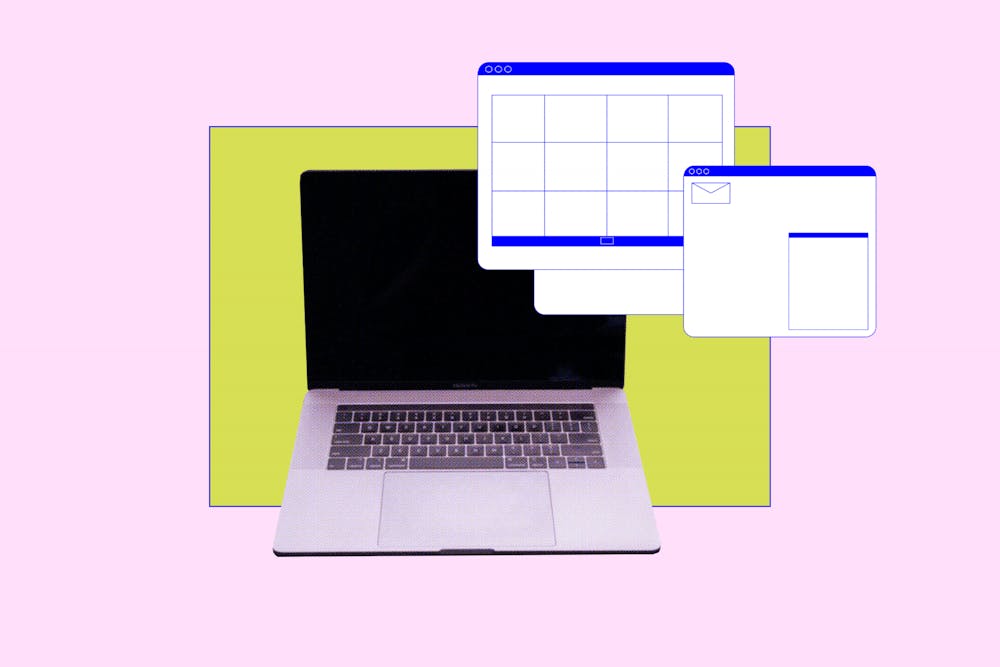One year ago, Penn students and faculty emerged from an atypical spring break to an almost dystopian new normal. In an astounding few weeks, students were asked to navigate housing relocations and total overhauls to their existing learning structures. Every student was impacted greatly. But for students with disabilities, examining these impacts opens the path to create better learning spaces. The one–year anniversary of the COVID–19 pandemic is an opportunity to think about what is working, what isn’t, and what accessibility for students with disabilities can look like at Penn as we rebuild the post–COVID–19 academic world.
Elizabeth Kim (C ’21) was a College junior when she started Disability Advocacy @ Penn alongside College students Emma Ronzetti (C ’21), Kruti Desai (C ’23), and Malik Griffin (C ’20). Elizabeth was born deaf and has cochlear implants. When asked about her experience as a deaf student at Penn, she notes having felt isolated in the quest to find a sense of belonging, saying, “It wasn’t until I learned ASL and became involved with a deaf community that I realized my disability wasn’t a burden.”
Disability, according to federal law, is defined as the presence of "any impairment that substantially limits one or more major life activities." For students, this means people with certain mental or physical differences may require additional support to study or attend class, balance classes with extracurriculars, or simply get around campus. At Penn, learning accommodations are overseen by the Office of Student Disabilities Services (SDS), and addressed by the Weingarten Learning Resources Center.
Among students with disabilities, there is diversity in lived experiences and challenges. Students with visible disabilities, such as physical impairments, have different needs and require different services than students with learning difficulties. Nationally, it is estimated that 19.5% of college students have a disability, with about 4% of those students being deaf. For students with disabilities, distance learning poses the risk for extra disruptions in work environments, loss of external structure, and barriers to optimal learning comprehension from having to operate behind screens.
The switch to remote learning in the past year has accelerated tools for online learning, Elizabeth says. Google Chrome released a live captioning tool that provides increasingly accurate automatic transcription with appropriate capitalization, which helps hearing comprehension. She credits SDS, empathetic professors, and remote learning advancements for helping her through the changes of virtual learning. Emma, her co–founder at D@P adds that to increase inclusivity for those with physical disabilities, it would be “hugely beneficial for Penn’s disability community for more meetings and classes to be recorded or via Zoom, even when we don’t necessarily have to do so.”
Emma, like Elizabeth, felt alone in her experience at Penn with a hearing disability. She has central auditory processing disorder, which means she processes the spoken word differently and can face difficulty understanding speech. It wasn’t until her SDS advisor recommended Lime Connect, a community of college students with disabilities learning to navigate the career search, that she realized how critical it is to bring that sense of belonging to Penn’s campus. “When I returned to campus from that program, I felt disappointed that I and other students did not have that same experience and peer support system at Penn,” Emma says.
At Penn, resources and accommodations to meet the needs of students with disabilities are often provided by the university at the individual level. This is essential to develop an appropriate learning plan and to provide need–based logistical support to students whether it be in–person or virtually. However, without the coordination of a community, it can be hard for students with disabilities to advocate for an inclusive academic experience. “Even though there was structural support, there was no organized community or specific event for incoming students with disability,” Elizabeth says while recalling her experience navigating her first years at Penn. She notes that accommodations that are needed for individuals with disabilities vary and that there is room for improvement to make sure these needs are being met, not just logistically but holistically.
There are several ways that the Penn administration and community can create a more inclusive environment both academically and culturally. These include allyship efforts such as talking and listening to members of the disability community directly about their experiences, as well as pushing for administrative change. Initiatives such as diversity training for professors on how to discuss accommodations with students with disabilities, adding a program about disability resources during New Student Orientation, and increasing representation of the disability community in campus speakers or in class curriculums can help create a more inclusive campus.
“Overall, I hope that Penn as a whole learned to be more understanding and more flexible once we reopen. The COVID–19 pandemic has been a hard time for all of us, and I think people really learned to accommodate and support each other. But, we can’t stop that momentum or give up on that collective feeling. As we transition back to a more normal college experience, it is vital that people are just as understanding with each other as they were at the start of the pandemic, and I believe this mentality would really support the Penn disability community in our efforts to be better recognized and understood by the Penn community.” says Emma.
As we’re imagining what learning will look like this fall, we have the opportunity to deliberately create spaces for those with different abilities and needs and to improve the ways that Penn is adequately inclusive towards students with disabilities.







